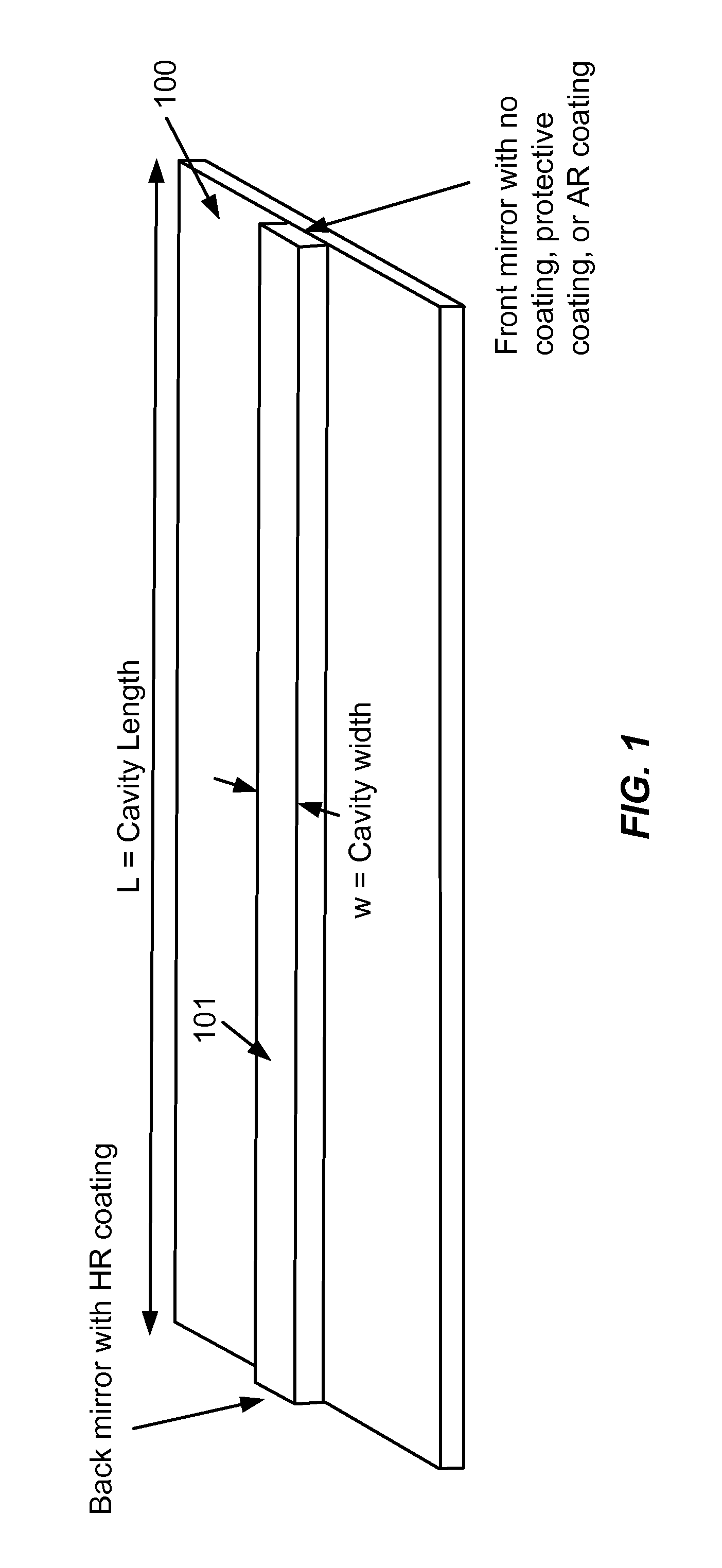Laser Package Having Multiple Emitters Configured on a Substrate Member
a laser package and substrate technology, applied in the field of optical devices, can solve the problems of undesirable efficiency, size, weight, cost, and energy dissipation of light bulbs as thermal energy, and achieve the effect of cost-effective, simple and cost-effectiv
- Summary
- Abstract
- Description
- Claims
- Application Information
AI Technical Summary
Benefits of technology
Problems solved by technology
Method used
Image
Examples
Embodiment Construction
[0028]The present invention provides high power GaN-based laser devices and related methods for making and using these laser devices. Specifically, laser devices are configured to operate with 0.5 to 5 W or 5 to 20 W of output power in the blue or green wavelength regimes. The laser devices are manufactured from bulk nonpolar or semipolar gallium and nitrogen containing substrates. As mentioned above, the output wavelength of the laser devices can be in the blue wavelength region of 430-475 nm and the green wavelength region 500-545 nm. Laser devices according to embodiments of the present invention can also operate in wavelengths such as violet (395 to 425 nm) and blue-green (475-505 nm). The laser devices can be used in various applications, such as projection system where a high power laser is used to project video content.
[0029]FIG. 1 is a simplified diagram illustrating an optical device. As an example, the optical device includes a gallium nitride substrate member 101 having a...
PUM
 Login to View More
Login to View More Abstract
Description
Claims
Application Information
 Login to View More
Login to View More - R&D
- Intellectual Property
- Life Sciences
- Materials
- Tech Scout
- Unparalleled Data Quality
- Higher Quality Content
- 60% Fewer Hallucinations
Browse by: Latest US Patents, China's latest patents, Technical Efficacy Thesaurus, Application Domain, Technology Topic, Popular Technical Reports.
© 2025 PatSnap. All rights reserved.Legal|Privacy policy|Modern Slavery Act Transparency Statement|Sitemap|About US| Contact US: help@patsnap.com



